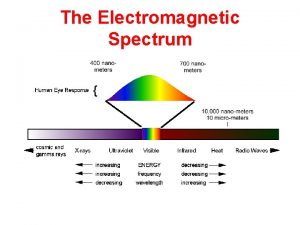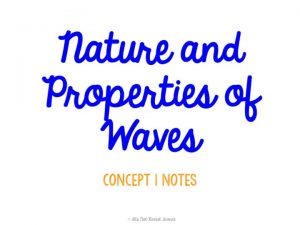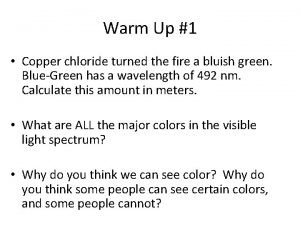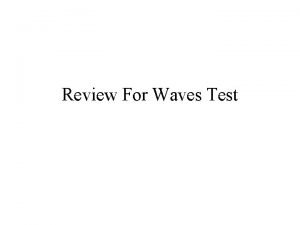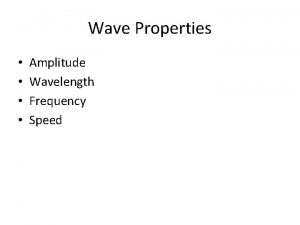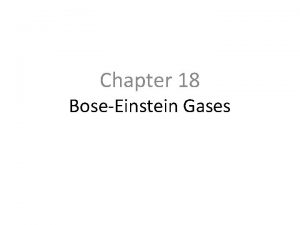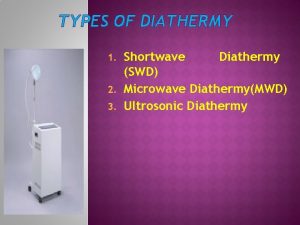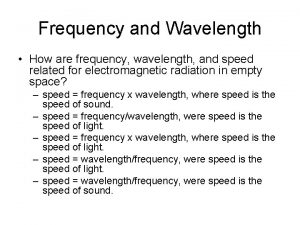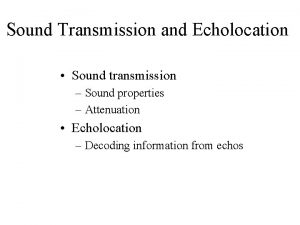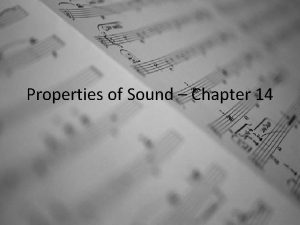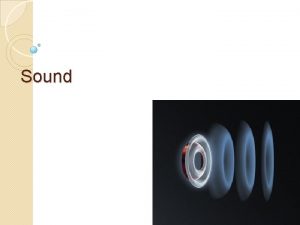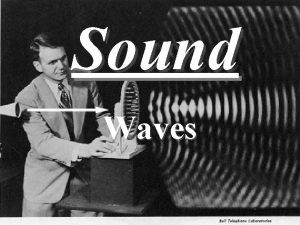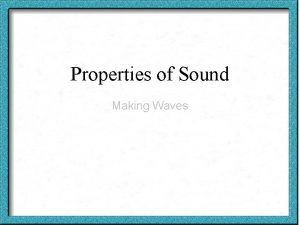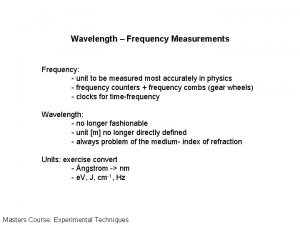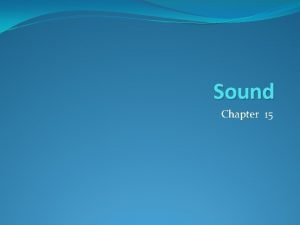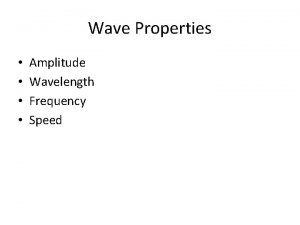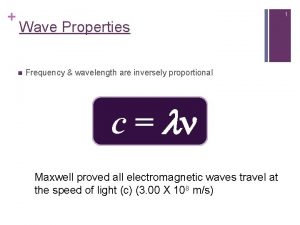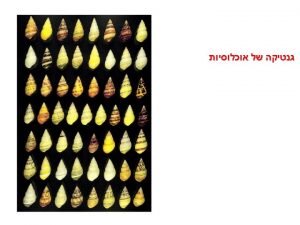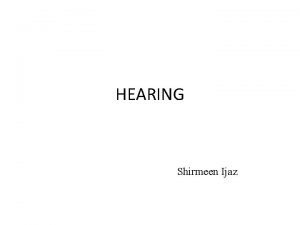Properties of sound Frequency and wavelength Wavelength of





















- Slides: 21

Properties of sound

Frequency and wavelength • Wavelength of a sound is the distance traveled in one cycle (or period). • Frequency (in cps or Hertz) = 1/period, (f =1/T)

Pressure vs particle movements Close to sound source, pressure and particle displacement are out of phase, but one wavelength from source they are in phase

Near field vs far field • Near field - molecular displacements are greater than normal, usually extends only to 1 -2 wavelengths from source • Far field - pressure displacement which travels as a wave away from source

Frequencies and wavelengths in air

Acoustical property comparisons Property Speed (m/s) Density (g/cm 3) Impedance (rayls) Particle velocity at 1 W/cm 2 (cm/s) Air 340 0. 001 30 50 Water 1500 1 150, 000 8

Wavelength problem • Which sound has a shorter wavelength: 1 k. Hz in air or 3 k. Hz in water? • Wavelength = speed of sound / frequency • Air: 340 m/s / 1000 cycle/s = 0. 34 m/cycle • Water: 1500 m/s / 3000 cycle/s = 0. 5 m/cycle • Therefore, the answer is 1 k. Hz in air

Source movement • When the sound source is moving, the frequency of the sound will be altered. This is known as the Doppler shift • Approaching sounds are higher in frequency • Departing sounds are lower in frequency

Phase shifts • Sounds that arrive out of phase cancel each other out (negative interference) • Sounds that arrive in phase increase in amplitude (positive interference) • Sounds partially out of phase create varying amplitudes (beats)

Amplitude measurement • Peak, peak-to-peak, RMS (root-mean-squared) • Sound pressure is measured in decibels (d. B) on a log 10 scale relative to a reference level • d. B = 20 log 10 P 1/Pr where Pr is a reference pressure level, usually the threshold of human hearing at 4 k. Hz. This is referred to as sound pressure level (SPL) • A sound with twice the SPL is 6 d. B louder

Sample sound pressure levels • • • soft whisper 20 d. B nearby songbird, office hum 50 d. B barking dog 70 d. B roaring lion , heavy truck 90 d. B echolocating bat 100 d. B jet take-off 120 d. B

Amplitude problems • If sound A has 10 times the SPL of sound B, how much louder is A than B in d. B? • d. B = 20 log 10 10 = 20 d. B louder • If sound A is 100 db and sound B is 80 db, how much louder is A than B? • 20 db • If an 80 db sound is combined with a 40 db sound, how loud is the sound (approximately)? • 80 db

Sound attenuation • Spherical spreading • Absorption – Temperature and humidity effects • Scattering – Reflection, refraction, diffraction • Masking by background noise

Spherical spreading • Loss in sound intensity follows the inverse square law: pressure halves for each doubling of distance, i. e. - 6 d. B for each doubling of distance

Atmospheric attenuation Increases with temp. & square of frequency Nonlinear with humidity

Acoustic impedence • The degree to which a medium is compressible, expressed as the product of speed of sound and density of medium (air < water < earth) • Transmission between media with different impedences is difficult • Dictates efficiency of sound production and reception by organisms • Sounds reflect off animals in air, but can pass through them in water

Reflection and refraction If the speed of sound in medium 1 < medium 2, then the refracted wave is bent toward the boundary

Diffraction Reflected wave is out of phase with creeping wave. Occurs when wavelength is similar to object diameter

Scattering and wavelengths

Forests attenuate sound Excess attenuation depends on frequency due to effects of scattering and absorbtion

Background noise can mask sounds Forest Pasture Open ocean Coastal ocean
 What is the shortest electromagnetic wavelength
What is the shortest electromagnetic wavelength Amplitude wavelength and frequency
Amplitude wavelength and frequency A rhythmic disturbance that transfers energy
A rhythmic disturbance that transfers energy Wavelength of copper chloride
Wavelength of copper chloride Lambda formula
Lambda formula Frequency
Frequency How to find wavelength from frequency
How to find wavelength from frequency Wavelength formula triangle
Wavelength formula triangle Hc lambda calculator
Hc lambda calculator Frequency formula in terms of wavelength
Frequency formula in terms of wavelength Difference between swd and mwd
Difference between swd and mwd Em specturm
Em specturm Ehat is sound
Ehat is sound Marginal relative frequency
Marginal relative frequency Probability with relative frequency
Probability with relative frequency Average of sine wave
Average of sine wave Vmax=aw
Vmax=aw Frequency vs relative frequency
Frequency vs relative frequency Marginal frequency table
Marginal frequency table Joint relative frequency
Joint relative frequency “a sound mind is in a sound body”
“a sound mind is in a sound body” Extensive vs intensive properties
Extensive vs intensive properties
